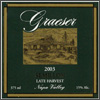
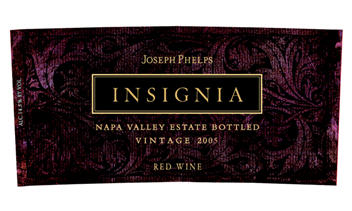
Beginning in 1978, with the ’74 vintage, Insignia may very well be America’s first Bordeaux-blended proprietary wine.
Joseph Phelps Insignia:
The Components of Terroir
The Terroir of the Components
The story behind the creation of what might be America's first Bordeaux-blend.
by
Alan Goldfarb
February 18, 2009
 t’s illusionary to believe that a wine, blended from vineyards across several intra-appellations, can definitively display its terroir characteristics. However, one can say assuredly, that Insignia, Joseph Phelps Vineyards’ iconographic Bordeaux-blend, exhibits pure Napa Valley-ism. But after 32 vintages of one of California’s greatest and one of its most expensive wines, what are the fingerprints of Insignia that inform its aroma, flavor and textural qualities?
t’s illusionary to believe that a wine, blended from vineyards across several intra-appellations, can definitively display its terroir characteristics. However, one can say assuredly, that Insignia, Joseph Phelps Vineyards’ iconographic Bordeaux-blend, exhibits pure Napa Valley-ism. But after 32 vintages of one of California’s greatest and one of its most expensive wines, what are the fingerprints of Insignia that inform its aroma, flavor and textural qualities?
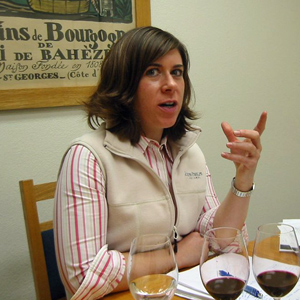
Joseph Phelps winemaker Ashley Hepworth
In a tasting for APPELLATION AMERICA recently in Phelps’ labs off the Silverado Trail east of St. Helena, newly named winemaker Ashley Hepworth and director of vineyard operations Philippe Pessereau discussed the various components that define Insignia’s terroir.
In the early years, the wine was mostly made from Merlot and Cabernet Franc. Today, Cabernet Sauvignon (80-85 percent) predominates. Insignia - since ’04 made entirely from estate owned or leased vineyards - is an amalgam of grapes from a half-dozen vineyards from five of Napa Valley’s sub-regions.
(Interesting to note is that this vineyard and Yountville are, at this point, “consistently on the cusp” of not making the final cut, according to Hepworth. That’s because Spring Valley has been replanted many times over the years and is still being assessed as to its efficacy for Insignia; and Yountville needs more consistency from a farming standpoint.)
Tasting the lots from each of these vineyards (from the ’06 and ’07 vintages) brings into focus what each of these vineyards lends to Insignia. The Suscol is the darkest in color with brambly, warm black fruit. The Yountville (from barrel) brings warm red fruit, with a hint of mint. The combined Las Rocas and Barboza from Stags Leap are more purple with blueberries, and bright with good acidity and some minerality.
The Banca Dorada (barrel) from Rutherford is the most distinctive. It’s closed and tight with a tarry quality (Hepworth describes this characteristic as “graphite”) and huge tannins.
The Spring Valley Ranch offering takes on lots of chocolate, no doubt from the barrel, with definitive blackberries, wonderful balance and fine-grained tannins.
Hepworth, who just witnessed her 10th vintage working with Insignia, comments about how the wine has
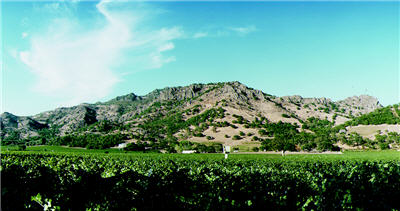
The bio-dynamically farmed Las Rocas Vineyard is 40 acres of Cab and sits under the Palisades on the east side of the Trail in the Stags Leap District.
“We’ve learned how to farm better,” she offers. “… We’re more selective (now) and our expectations are higher, and we ask ourselves, ‘Is this inspiring quality?’ … Coddling went into Insignia before, but that’s become more streamlined. We’ve understood more recently what each vineyard has given us.”
Added Pesserau, “Now that we have our own vineyards, we have better control. It means you can farm to the best of your ability to the vintage. (Before), the grower was the farmer and it (consistency) wasn’t always (achieved).”
Hepworth and Pessereau are then asked, How does all this - better control and blending of the vineyards - turn up in the glass?
There’s a long pause until Hepworth says, “I’m thinking back to the 2000 Insignia. That was a beautiful wine, but the lots were not consistent. That (keeping the lots separate and consistent) manifests in the glass. There’s more depth of flavor and more balance in the vineyards, which leads to more balance in the glass.
“We can understand what we’re getting because we’ve quantified it … and we have a wine that is more ageable.”
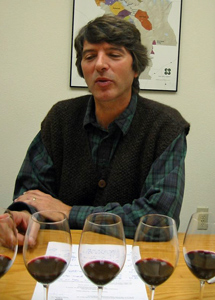
Director of Joseph Phelps vineyard operations Philippe Pessereau










 READER FEEDBACK: To post your comments on this story,
READER FEEDBACK: To post your comments on this story,


